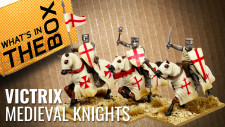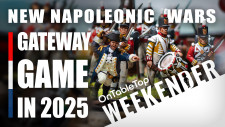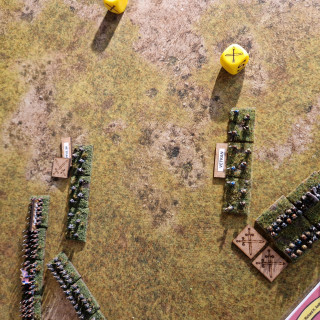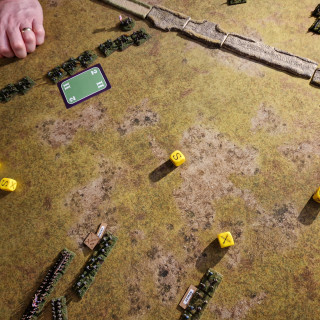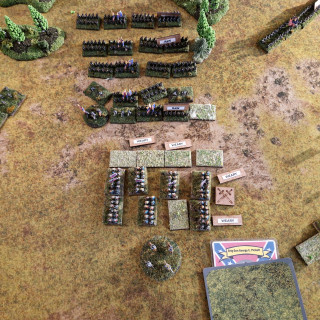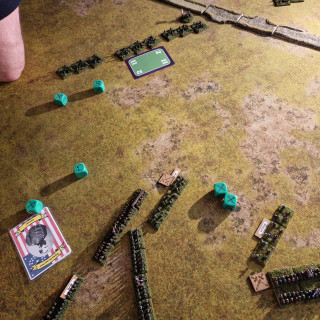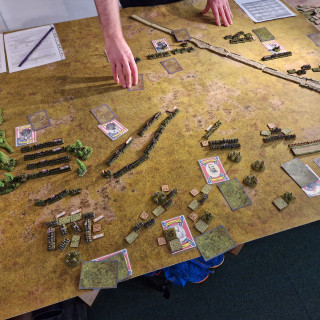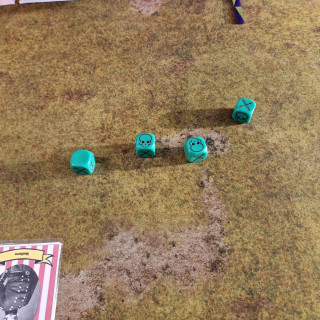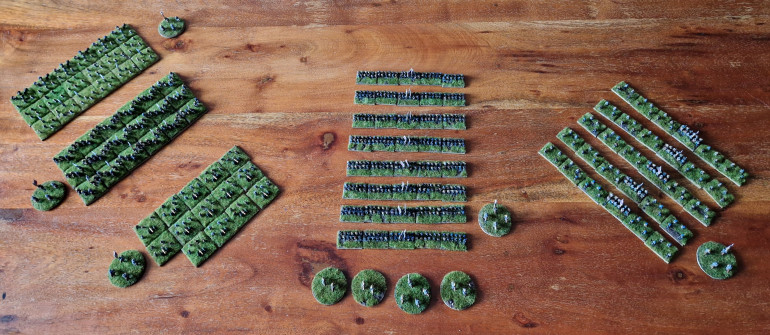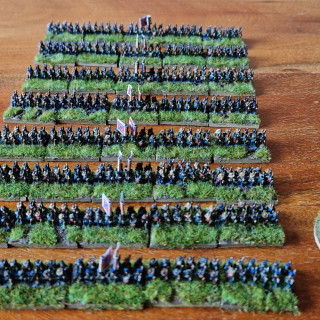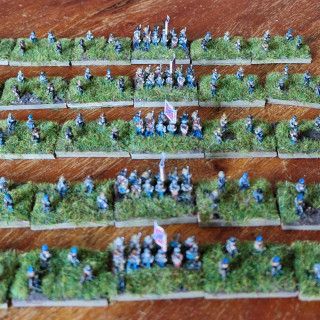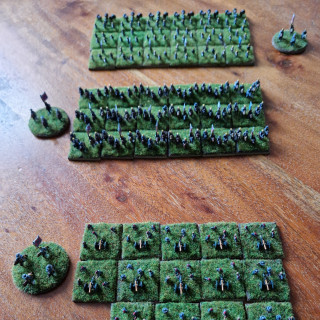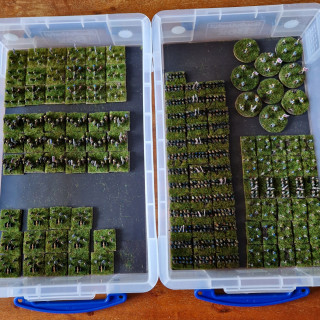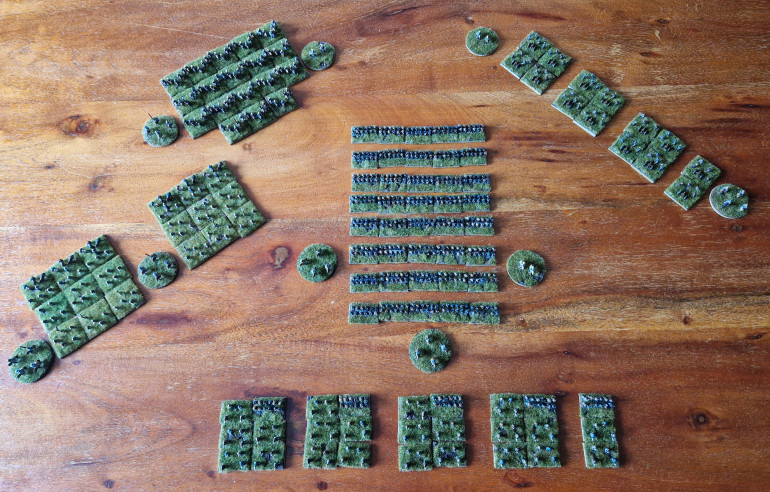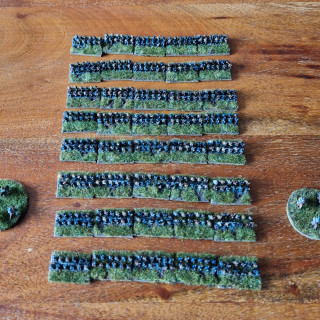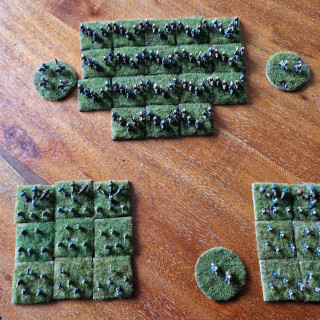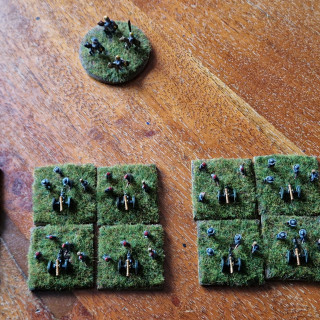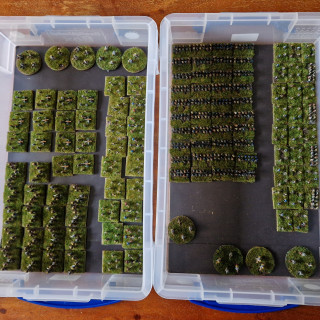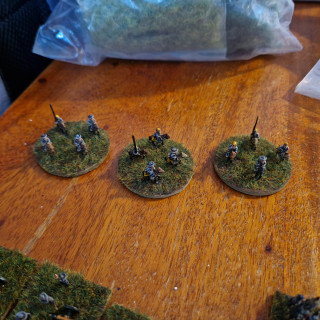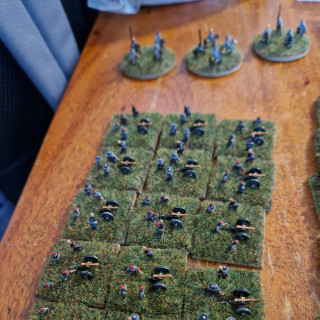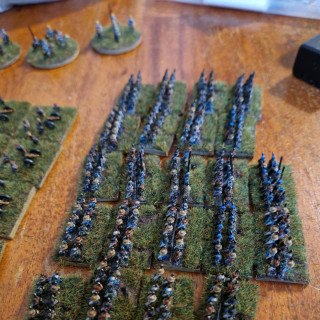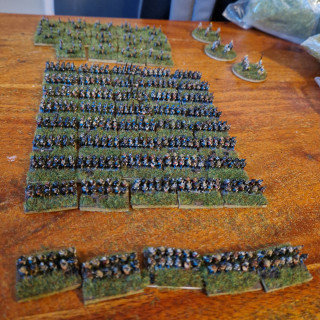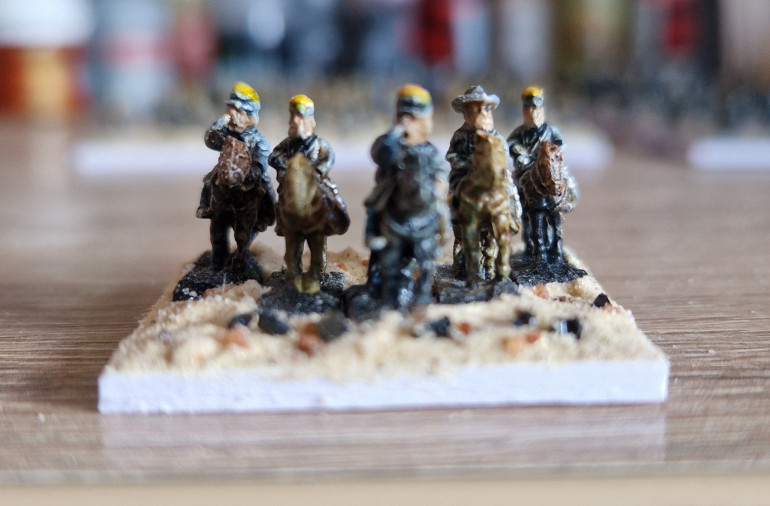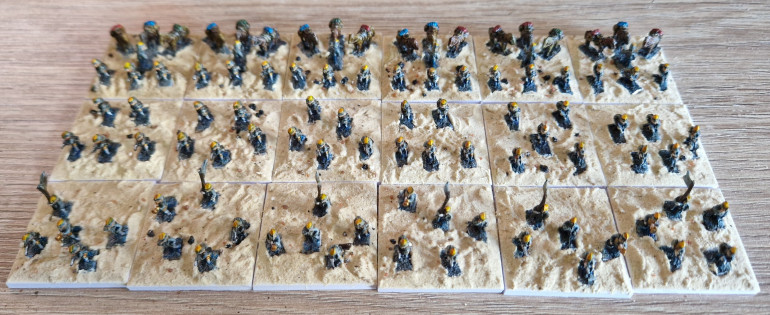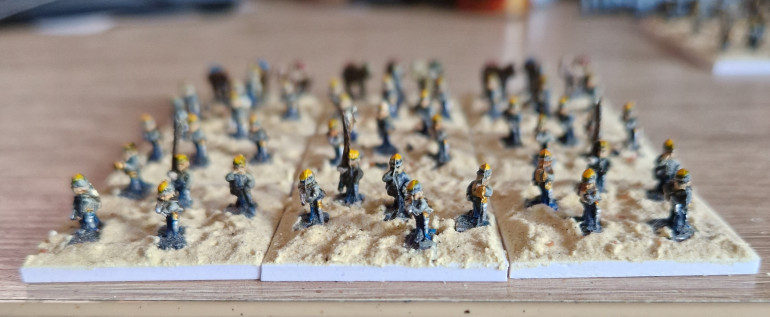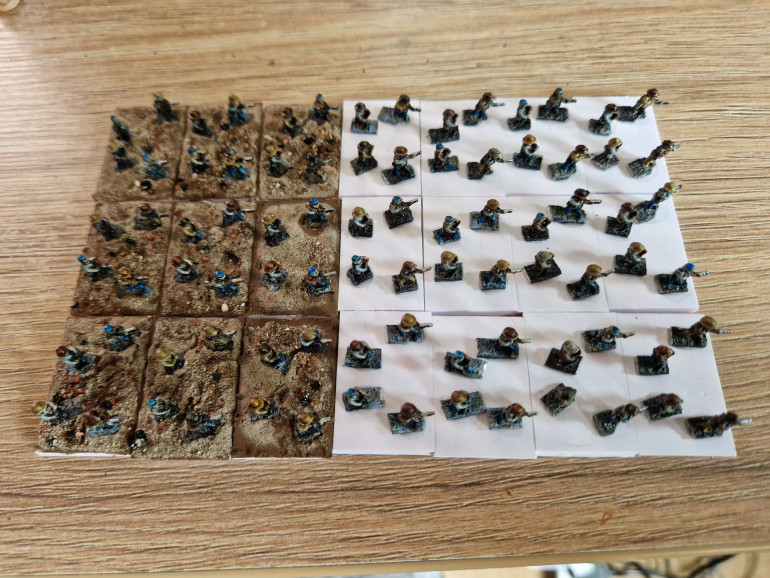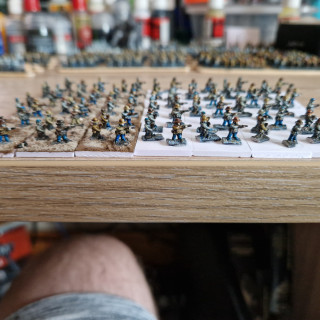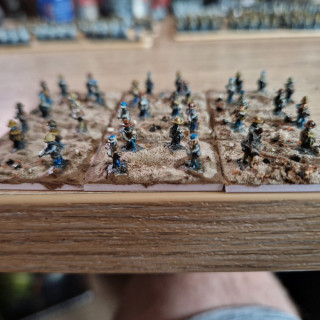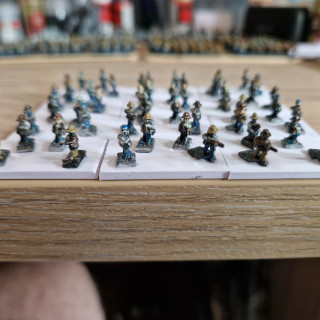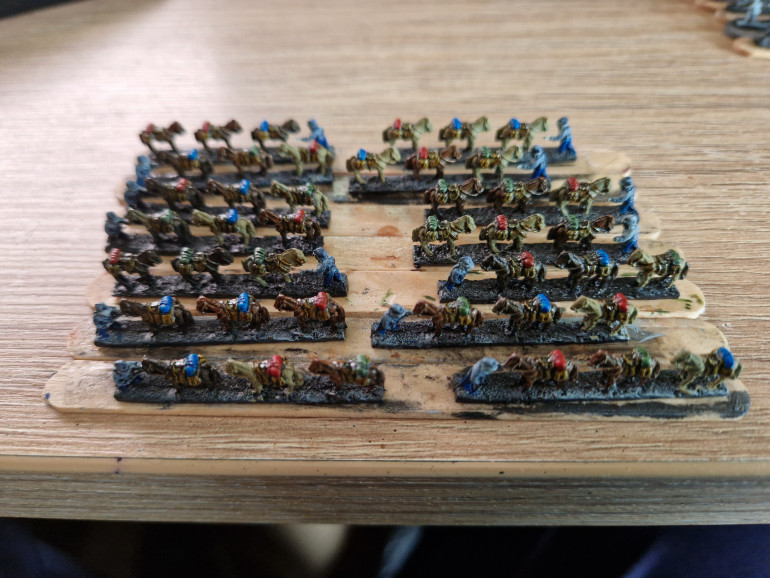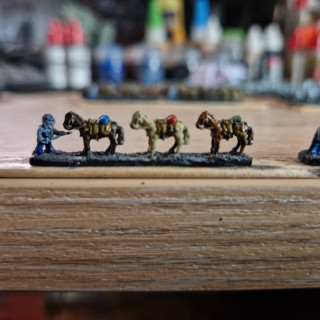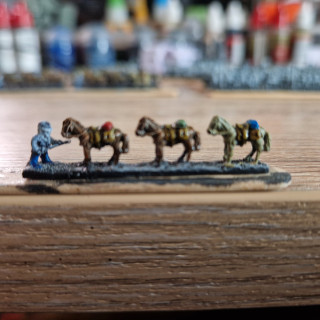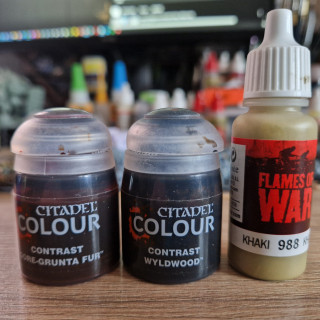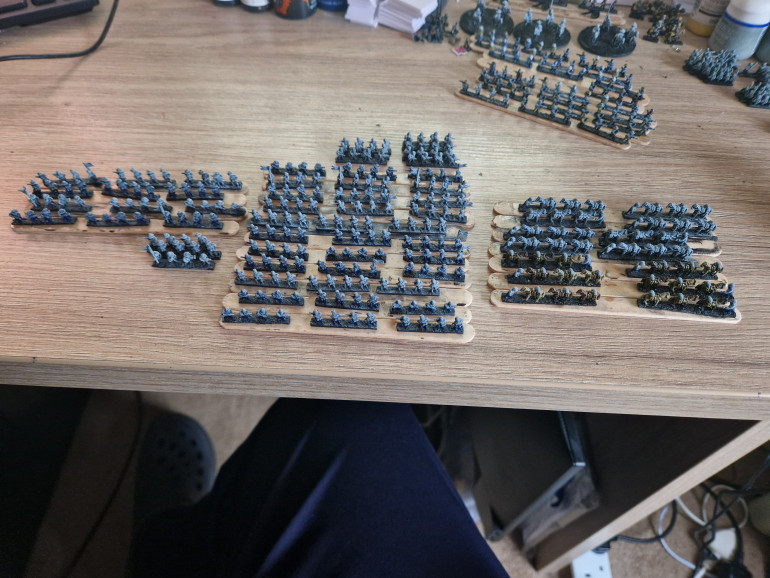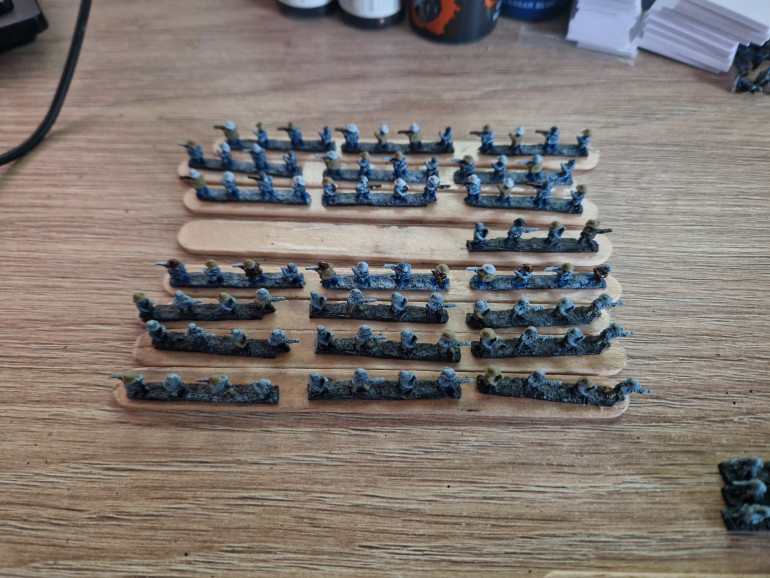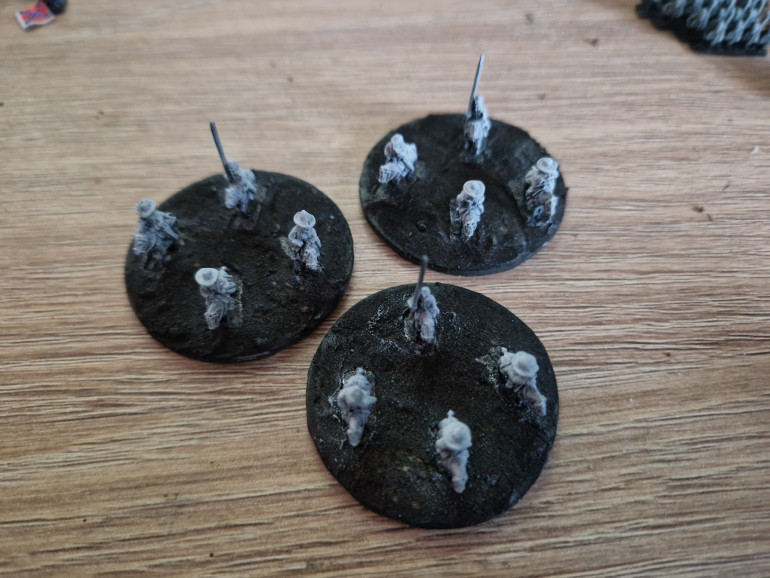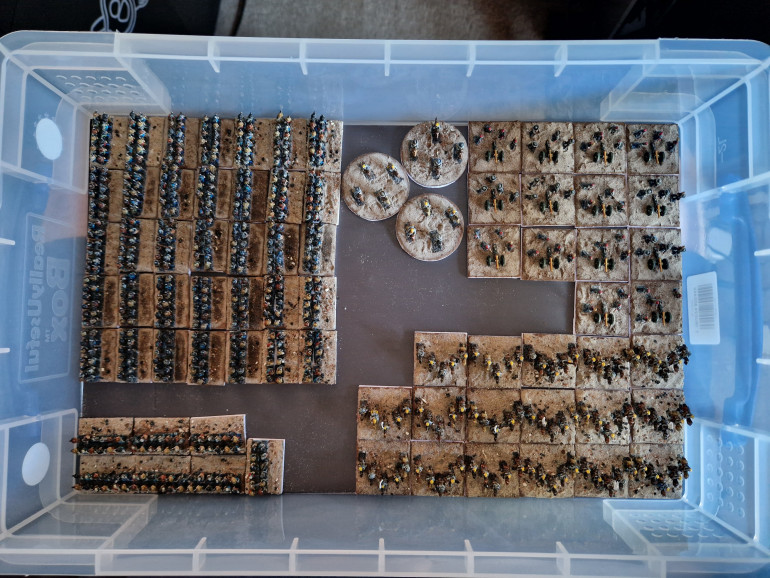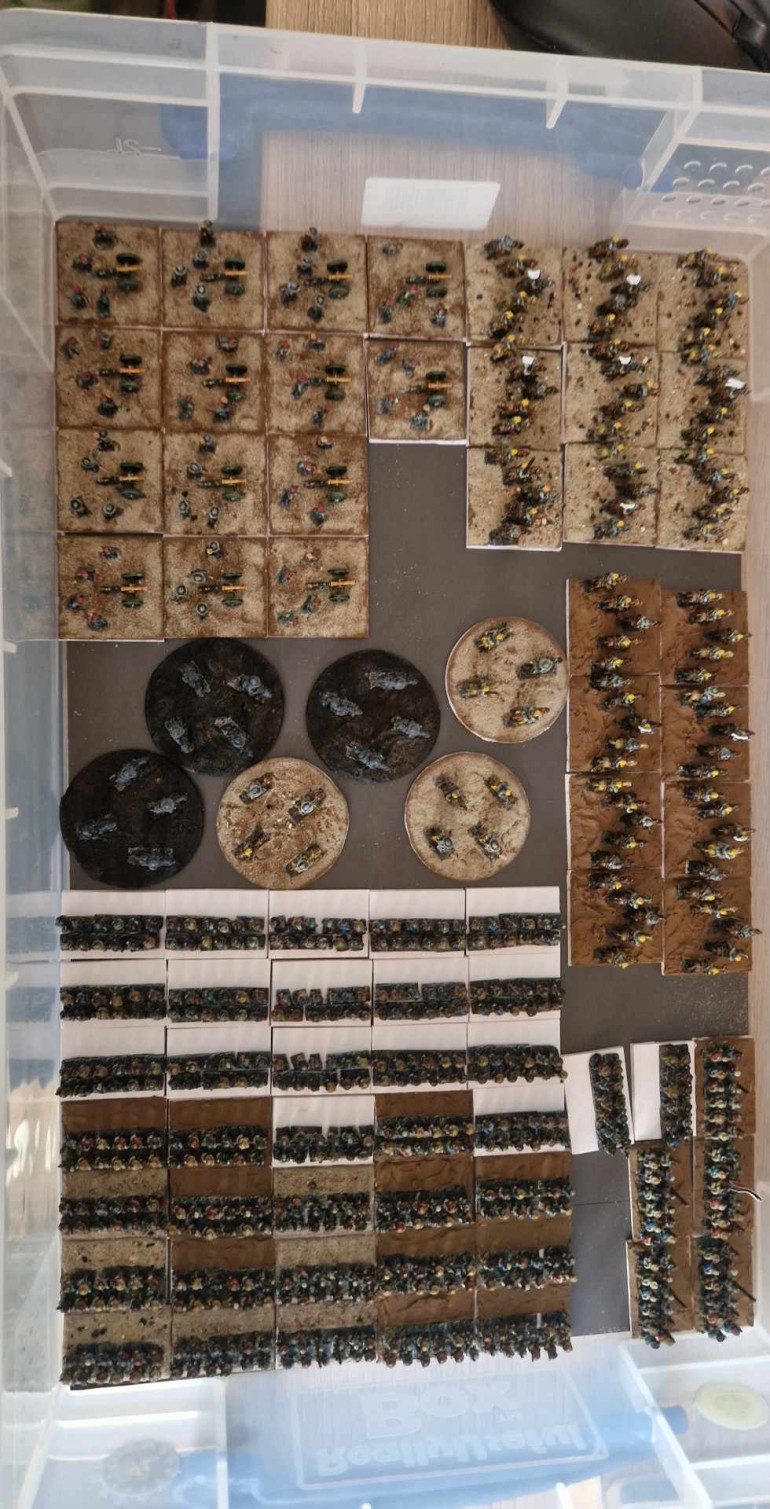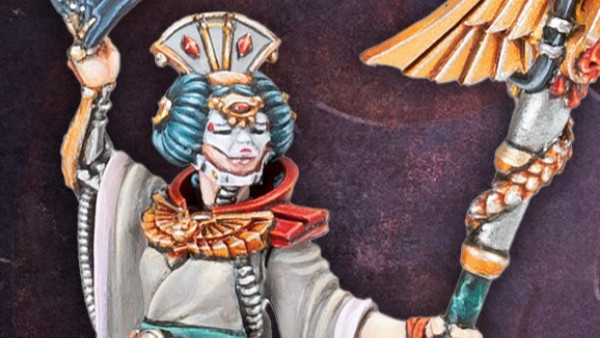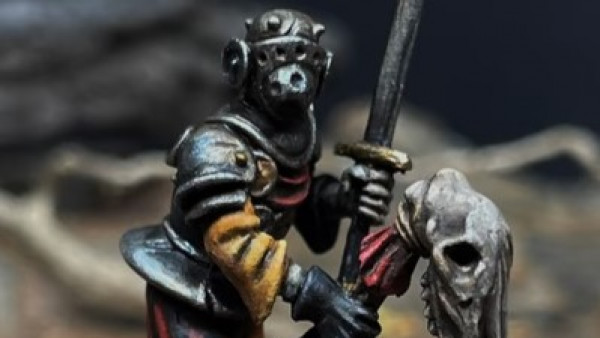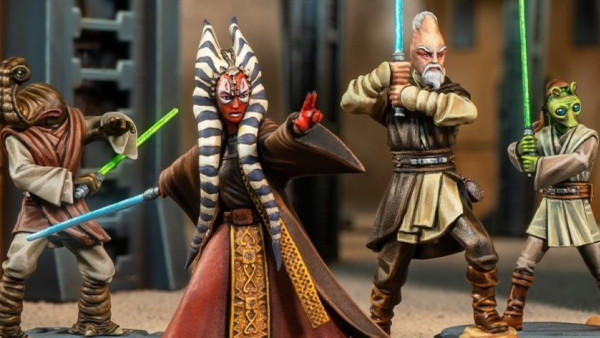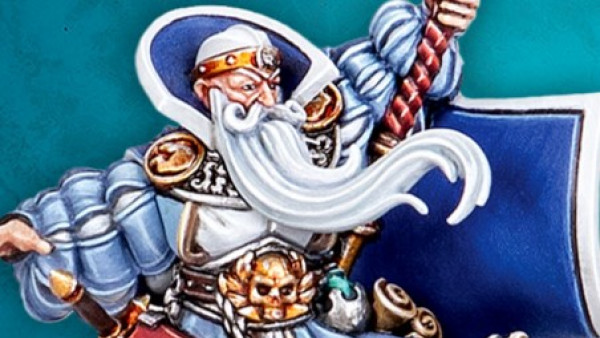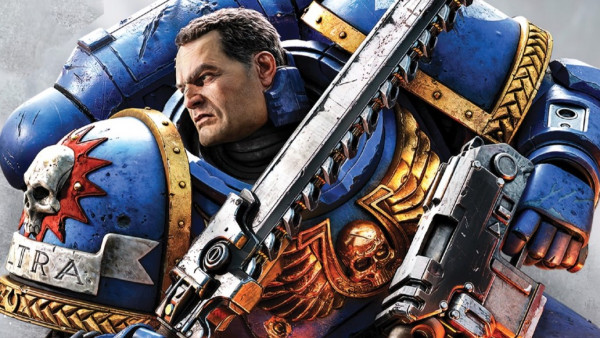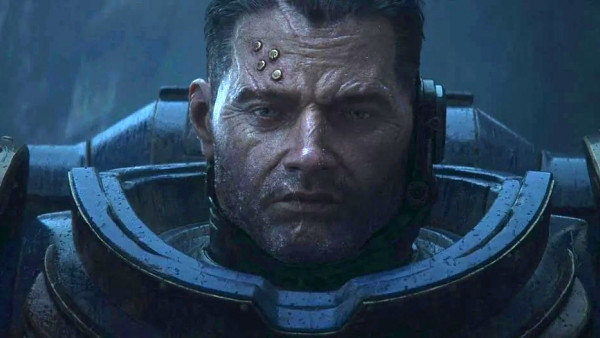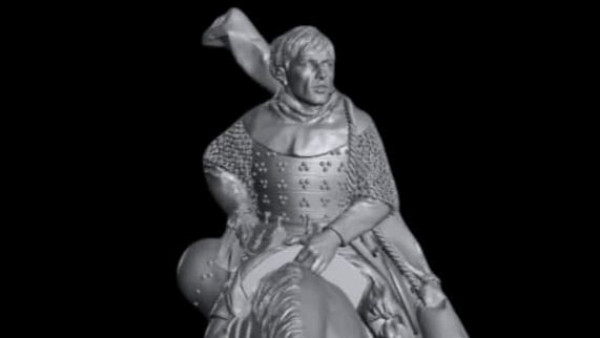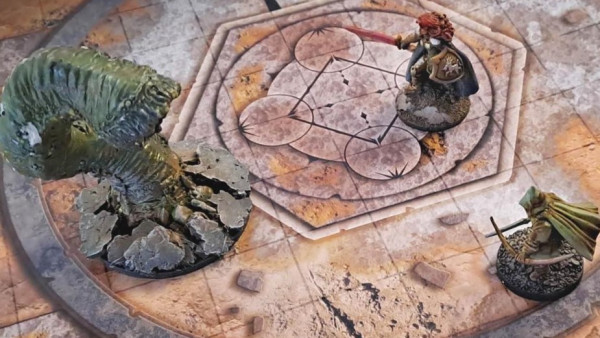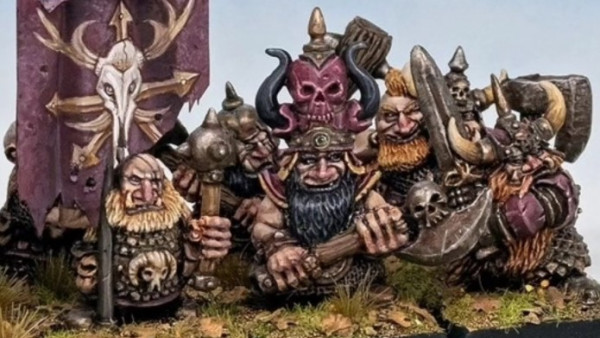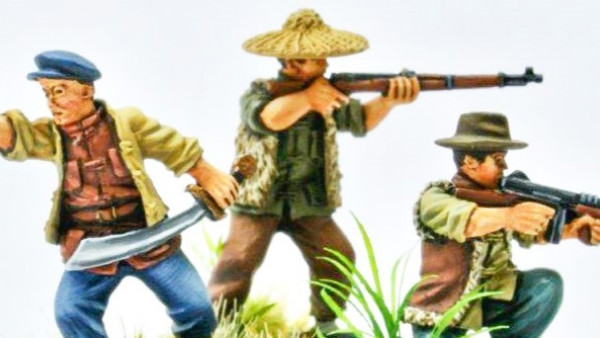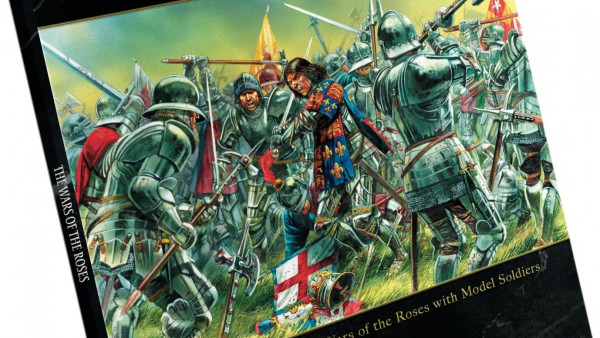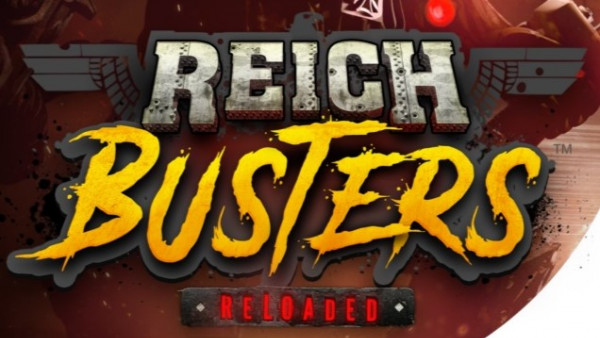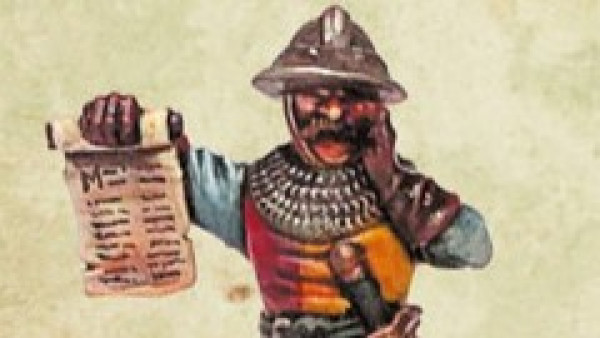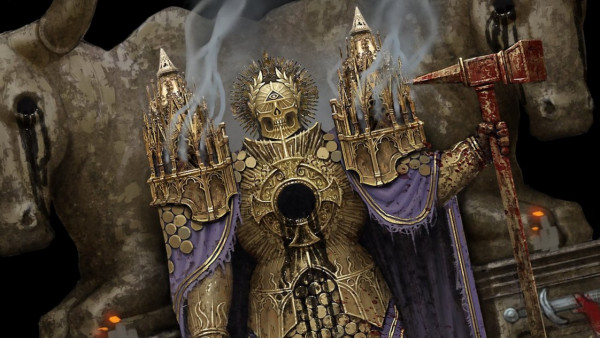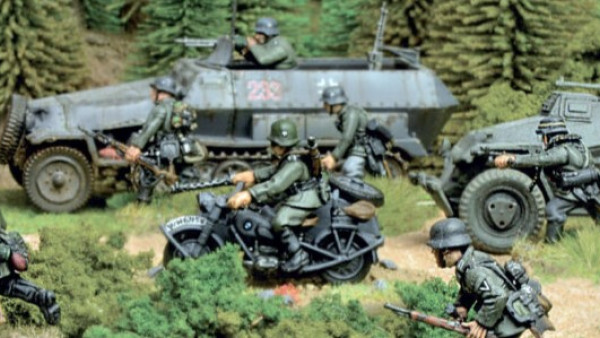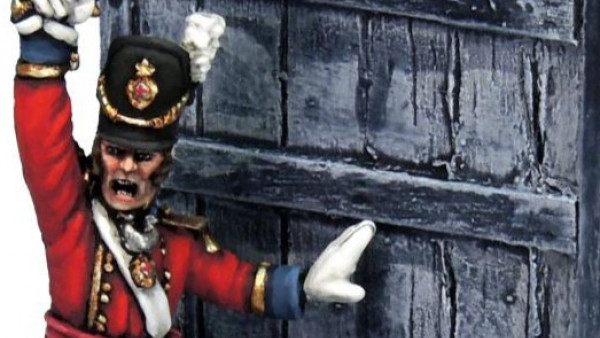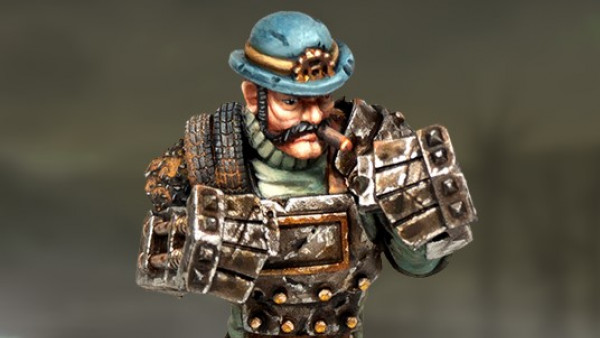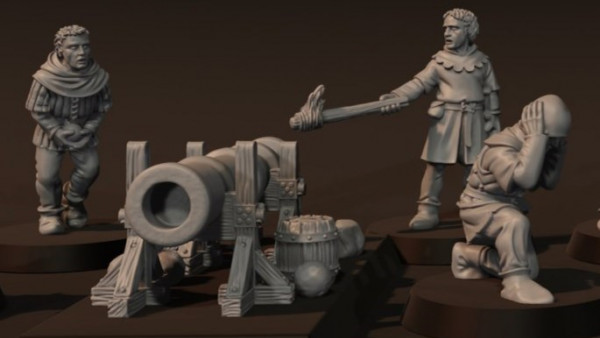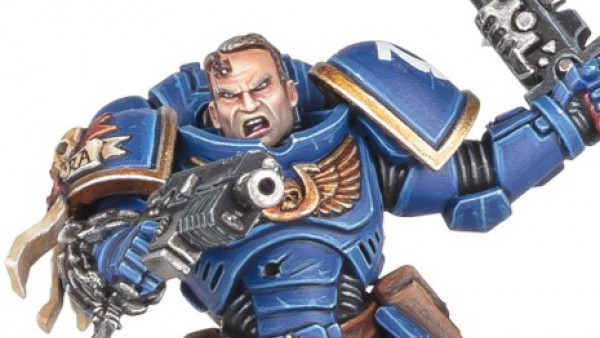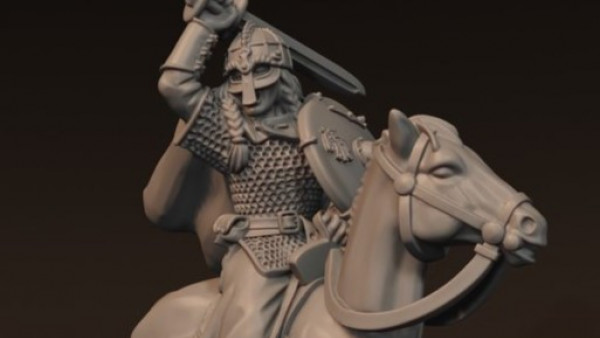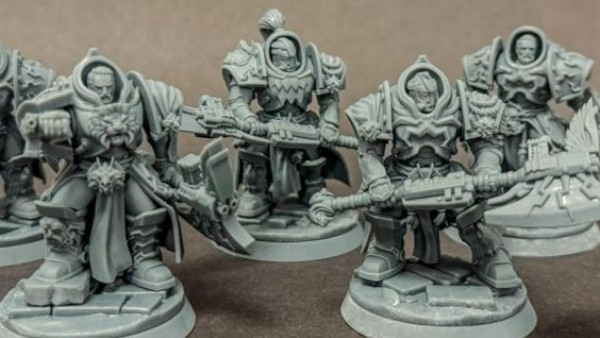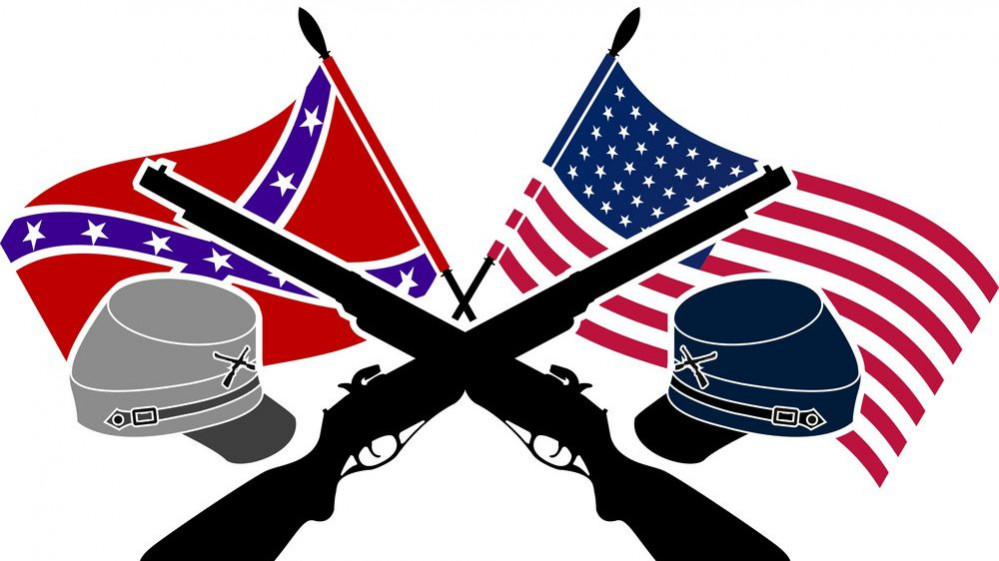
ALL DONE!! – Building a 6mm Baccus ACW Confederate army for a new game system to be announced
Recommendations: 265
About the Project
working @commodore Rob and @Brucelea to build up armies to fight out a ACW battle, North verse South in 6mm using a new ruleset based on Mortem et Glorium
Related Game: Mortem Et Gloriam
Related Company: Baccus 6mm
Related Genre: Historical
This Project is Active
ALL DONE!!!!
The final list
6 bases – Generals (4 per base)
3 bases – Sub Generals (2 per base)
42 bases – Infantry – 8 Regiments of 5 bases (12 per base)
25 bases – Skirmishers – 5 Regiments of 5 bases (4 per base) + 5 Command bases
14 bases – Artillery (Artillery piece and 4 crew)
18 bases – Cavalry (5 per base)
18 bases – Dismounted Cavalry (5 per base)
the full army, almost finished, just the Flegs to do
The final stats
6 bases – Generals (4 per base)
3 bases – Sub Generals (2 per base)
42 bases – Infantry – 8 Regiments of 5 bases (12 per base)
22 bases – Skirmishers (4 per base) + 5 Command bases
14 bases – Artillery (Artillery piece and 4 crew)
18 bases – Cavalry (5 per base)
18 bases – Dismounted Cavalry (5 per base)
Final army list, well almost final list
6 bases – Generals (4 per base)
3 bases – Sub Generals (2 per base)
42 bases – Infantry – 8 Regiments of 5 bases (12 per base)
22 bases – Skirmishers (4 per base)
14 bases – Artillery (Artillery piece and 4 crew)
18 bases – Cavalry (5 per base)
18 bases – Dismounted Cavalry (5 per base)
working on the last Infantry Regiment
Blocking in colour on the dismounted Cavalry
Colours used:
Contrast Gore-Grunta Fur, Contrast Wyldwood and Vallejo Khaki for the horse
Contrast Snakebite leather for the saddles
Contrast Camo Creed, Contrast Blood Angels Red and Contrast Talassar Blue
Contrast Space Wolf Grey for uniforms – Jackets/Trousers
seems if I have cavalry bases I also need dismounted cavalry bases, ah well
Same paint process, prime black, dry brush Adeptus Battle Grey, then Astronomican grey, then white. Then contrast paints to avail of the shading.
quick pic of the work so far
6 bases – Commanders (the Generals)
17 bases – Cavalry
14 bases – Artillery
7 Regiments – 5 bases infantry per Regiment
decided to play with AI and generate some info
Playing with ChatGPT
The Technology
The American Civil War was a period of significant innovation, with advancements in military technology, medicine, communication, and logistics. These innovations not only shaped the outcome of the war but also laid the groundwork for modern warfare. Here are some of the major innovations:
- Rifled Muskets and Minie Balls
- Innovation: The rifled musket, with spiral grooves inside the barrel, allowed for greater accuracy and range compared to smoothbore muskets. The Minie ball, a conical bullet, was designed to expand upon firing, making it easier to load while still engaging the rifling.
- Impact: These weapons dramatically increased the lethality of infantry, contributing to the high casualty rates. The increased range also changed battlefield tactics, making traditional massed infantry charges far more deadly.
- Ironclad Warships
- Innovation: Ironclad warships were vessels protected by iron or steel armor plates. The most famous ironclads were the USS Monitor and the CSS Virginia (formerly the USS Merrimack), which faced off in the Battle of Hampton Roads in 1862.
- Impact: This battle marked the first meeting in combat of ironclad ships, signaling the end of the era of wooden warships. Ironclads became crucial in naval warfare, influencing ship design globally.
- Railroads
- Innovation: Railroads were not new, but their strategic use during the Civil War was unprecedented. Both the Union and Confederate armies used railroads to move troops, equipment, and supplies quickly over long distances.
- Impact: Railroads provided a logistical advantage, particularly for the Union, which had a more extensive rail network. The ability to rapidly deploy forces and resources contributed to the Union’s success.
- Telegraph
- Innovation: The telegraph allowed for near-instantaneous communication over long distances. The Union, under the leadership of the U.S. Military Telegraph Corps, laid extensive telegraph lines to facilitate communication between distant units and commanders.
- Impact: The telegraph revolutionized command and control, allowing leaders like President Lincoln and General Grant to communicate directly with field commanders. This real-time communication was crucial for coordinating complex operations across multiple theaters of war.
- Aerial Reconnaissance (Balloons)
- Innovation: The Union Army employed hot air balloons for aerial reconnaissance, providing a bird’s-eye view of enemy positions and movements. The balloons were tethered to the ground and equipped with telegraph lines to relay information.
- Impact: Aerial reconnaissance gave commanders valuable intelligence that was previously unattainable, helping to guide strategic decisions. Although not widespread, it was an early form of military aerial observation.
- Trench Warfare
- Innovation: Extensive use of trench warfare began during the Civil War, especially in the later stages, such as the Siege of Petersburg. Soldiers dug elaborate networks of trenches to protect themselves from increasingly deadly firepower.
- Impact: Trench warfare foreshadowed the tactics used in World War I. The trenches provided protection but also led to prolonged, static conflicts, making assaults on fortified positions extremely costly.
- Military Medicine
- Innovation: The Civil War saw advancements in military medicine, including the organization of ambulance services, the establishment of large field hospitals, and the use of anesthesia in surgery. Surgeon General Jonathan Letterman developed a triage system to prioritize treatment based on injury severity.
- Impact: These innovations significantly improved the survival rate of wounded soldiers. The Civil War also saw the widespread use of prosthetics due to the high number of amputations, leading to innovations in prosthetic design and manufacturing.
- Repeating Rifles and Carbines
- Innovation: Repeating rifles, such as the Spencer and Henry rifles, could fire multiple rounds without reloading. These firearms were faster and more efficient than the single-shot muskets that were standard at the war’s outset.
- Impact: Although not as widely distributed due to supply issues and conservative military thinking, repeating rifles gave units equipped with them a significant firepower advantage, leading to changes in small-unit tactics.
- Submarines and Torpedoes
- Innovation: The Confederates developed early submarines, like the H.L. Hunley, which became the first submarine to sink an enemy ship (the USS Housatonic) in 1864. The war also saw the use of naval mines, referred to as torpedoes.
- Impact: Although primitive, these innovations demonstrated the potential of underwater warfare, influencing future naval strategies and the development of more advanced submarines and underwater explosives.
- Photography
- Innovation: Photography was used extensively during the Civil War to document the conflict, with photographers like Mathew Brady and Alexander Gardner capturing battlefield scenes, portraits of soldiers, and the aftermath of battles.
- Impact: The widespread distribution of war photographs brought the realities of the conflict to the public in a way that had never been done before. It changed public perception of the war and laid the groundwork for photojournalism.
These innovations collectively had a profound impact on the Civil War, influencing tactics, strategy, and the overall conduct of the war. Many of these advancements also had long-lasting effects on military technology and practices in the years that followed.
The Generals
The American Civil War was shaped by several notable leaders, both military and political, whose decisions and actions had profound impacts on the course of the conflict and its outcome. Here are some of the most prominent figures:
Union Leaders
1. Abraham Lincoln
- Position: 16th President of the United States (1861-1865)
- Role: Lincoln’s leadership was crucial in preserving the Union. He navigated the complex political landscape, balancing conflicting interests while making the abolition of slavery a central goal with the Emancipation Proclamation in 1863. His commitment to reunification and his famous speeches, including the Gettysburg Address, shaped the nation’s post-war identity. He was assassinated shortly after the war ended, in April 1865.
2. Ulysses S. Grant
- Position: General-in-Chief of the Union Army
- Role: Grant emerged as the leading Union general after early successes in the Western Theater, including victories at Fort Donelson and Vicksburg. His relentless pursuit of the Confederate Army, particularly during the Overland Campaign and the Siege of Petersburg, culminated in General Robert E. Lee’s surrender at Appomattox Court House in 1865. After the war, Grant served as the 18th President of the United States.
3. William Tecumseh Sherman
- Position: Major General
- Role: Sherman is best known for his “March to the Sea” from Atlanta to Savannah, Georgia, in 1864. His strategy of total war aimed to destroy the South’s will and capacity to fight. Sherman’s tactics were controversial but effective, hastening the end of the war. His close partnership with Grant was pivotal in the Union’s overall military strategy.
4. George McClellan
- Position: Major General
- Role: McClellan played a key role early in the war, organizing the Army of the Potomac and serving as the Union’s general-in-chief. However, his cautiousness and reluctance to engage Confederate forces frustrated President Lincoln, leading to his removal. Despite his military achievements, he ran unsuccessfully against Lincoln in the 1864 presidential election.
5. David Farragut
- Position: Admiral
- Role: Farragut was the Union’s first rear admiral, vice admiral, and admiral in the U.S. Navy. He is best known for his decisive victory at the Battle of Mobile Bay in 1864, where he famously ordered, “Damn the torpedoes, full speed ahead!” His leadership secured Union control of critical Southern ports and was instrumental in the naval blockade of the Confederacy.
Confederate Leaders
1. Jefferson Davis
- Position: President of the Confederate States of America (1861-1865)
- Role: Davis was the political leader of the Confederacy, overseeing its government and military strategy. Despite his strong leadership skills, Davis faced challenges in uniting the various Southern states and maintaining the Confederate war effort as resources dwindled and internal divisions grew. After the war, he was imprisoned for two years and was never tried for treason.
2. Robert E. Lee
- Position: General-in-Chief of the Confederate Army
- Role: Lee was the Confederacy’s most prominent and respected general, known for his tactical brilliance and leadership during key battles such as the Second Battle of Bull Run, Fredericksburg, and Chancellorsville. Despite his successes, Lee’s invasions of the North, culminating in the Battle of Gettysburg, were ultimately unsuccessful. His surrender at Appomattox Court House in 1865 marked the effective end of the Civil War.
3. Stonewall Jackson
- Position: Lieutenant General
- Role: Thomas “Stonewall” Jackson was one of Lee’s most trusted commanders, earning his nickname for his steadfastness at the First Battle of Bull Run. Jackson played a crucial role in Confederate victories at battles like Chancellorsville, where his audacious tactics confused and defeated Union forces. His death in 1863, after being accidentally shot by his own men, was a significant loss for the Confederacy.
4. James Longstreet
- Position: Lieutenant General
- Role: Longstreet was one of Lee’s most trusted generals, known for his defensive prowess. He played key roles in battles such as Fredericksburg and the Wilderness. Although his actions at Gettysburg, particularly his hesitation on the third day, have been criticized, Longstreet was a highly competent and respected military leader. After the war, he worked to reconcile the South with the Union.
5. J.E.B. Stuart
- Position: Major General
- Role: Stuart was a renowned cavalry commander known for his reconnaissance and use of cavalry in support of Lee’s army. His flamboyant personality and daring raids made him a celebrated figure in the South. However, his absence during critical moments of the Gettysburg Campaign due to an extended raid has been debated as a factor in the Confederate defeat there.
Other Notable Leaders
1. Clara Barton
- Position: Nurse, Founder of the American Red Cross
- Role: Although not a military leader, Clara Barton made significant contributions to the care of wounded soldiers. She organized supplies and provided first aid on the front lines, earning her the nickname “Angel of the Battlefield.” After the war, she continued her humanitarian work, founding the American Red Cross.
2. Frederick Douglass
- Position: Abolitionist Leader, Advisor to President Lincoln
- Role: Douglass was a former enslaved person who became a leading abolitionist and advocate for African American rights. During the Civil War, he was a key figure in pushing for the enlistment of Black soldiers in the Union Army and met with Lincoln to discuss the treatment of African American troops and the broader goals of the war.
These leaders, through their decisions, strategies, and leadership, played pivotal roles in shaping the course of the Civil War and its aftermath.
Notable Battles
The American Civil War was marked by numerous key battles, each playing a crucial role in the outcome of the conflict. Here’s an overview of some of the most significant battles:
- First Battle of Bull Run (First Manassas)
- Date: July 21, 1861
- Location: Virginia
- Significance: The first major battle of the Civil War, it shattered the North’s hope of a quick victory. Confederate forces, led by Generals P.G.T. Beauregard and Joseph E. Johnston, defeated Union forces under Brigadier General Irvin McDowell. The chaotic Union retreat signaled a long and grueling conflict ahead.
- Battle of Antietam (Sharpsburg)
- Date: September 17, 1862
- Location: Maryland
- Significance: Known as the bloodiest single day in American history, with over 22,000 casualties. The battle ended in a tactical draw, but it halted Confederate General Robert E. Lee’s invasion of the North. The Union’s strategic victory gave President Abraham Lincoln the confidence to issue the preliminary Emancipation Proclamation, changing the war’s moral and political stakes.
- Battle of Shiloh
- Date: April 6–7, 1862
- Location: Tennessee
- Significance: A bloody and significant battle in the Western Theater. Union forces under Major General Ulysses S. Grant were surprised by Confederate forces led by General Albert Sidney Johnston. Despite initial Confederate success, Union reinforcements helped turn the tide, resulting in a Union victory. The battle highlighted the war’s brutal nature and the importance of the Western Theater.
- Battle of Gettysburg
- Date: July 1–3, 1863
- Location: Pennsylvania
- Significance: The largest and most famous battle of the Civil War, Gettysburg was a turning point. It was the furthest north that Lee’s army would penetrate, and it ended in a decisive Union victory. The battle resulted in massive casualties on both sides (about 51,000) and marked the beginning of the decline of the Confederate Army. President Lincoln later delivered the Gettysburg Address here, further defining the purpose of the war.
- Siege of Vicksburg
- Date: May 18 – July 4, 1863
- Location: Mississippi
- Significance: A crucial victory for the Union in the Western Theater. The siege, led by General Grant, resulted in the surrender of the Confederate stronghold of Vicksburg, effectively splitting the Confederacy in two and giving the Union control of the Mississippi River. This victory, coupled with Gettysburg, marked a significant turning point in the war.
- Battle of Fredericksburg
- Date: December 11–15, 1862
- Location: Virginia
- Significance: A major Confederate victory, where Union forces under Major General Ambrose Burnside suffered heavy losses attacking fortified Confederate positions on Marye’s Heights. The defeat demoralized the Union and exemplified the costly and often futile frontal assaults that characterized much of the Civil War.
- Battle of Chancellorsville
- Date: April 30 – May 6, 1863
- Location: Virginia
- Significance: Often considered General Lee’s greatest victory, the Confederate army defeated a much larger Union force under Major General Joseph Hooker. However, the victory came at a great cost, including the loss of Confederate General “Stonewall” Jackson, who was mortally wounded by friendly fire.
- Battle of Atlanta
- Date: July 22, 1864
- Location: Georgia
- Significance: A significant Union victory in the Western Theater, led by Major General William Tecumseh Sherman. The fall of Atlanta was a critical blow to the Confederacy and boosted Northern morale. It also played a role in securing President Lincoln’s re-election later that year.
- Battle of Fort Sumter
- Date: April 12–13, 1861
- Location: South Carolina
- Significance: The battle that started the Civil War. Confederate forces attacked the Union-held fort in Charleston Harbor, leading to its surrender. The attack united the North and led to a surge of enlistment in the Union army.
- Appomattox Court House
- Date: April 9, 1865
- Location: Virginia
- Significance: The final engagement of the Civil War, where General Lee surrendered to General Grant, effectively ending the conflict. This event marked the collapse of the Confederate cause and the beginning of the post-war Reconstruction era.
These battles reflect the intense and varied nature of the Civil War, showcasing the strategic importance of geography, leadership, and political implications. The war was characterized by a combination of large-scale engagements, sieges, and campaigns that ultimately determined the fate of the United States.

































